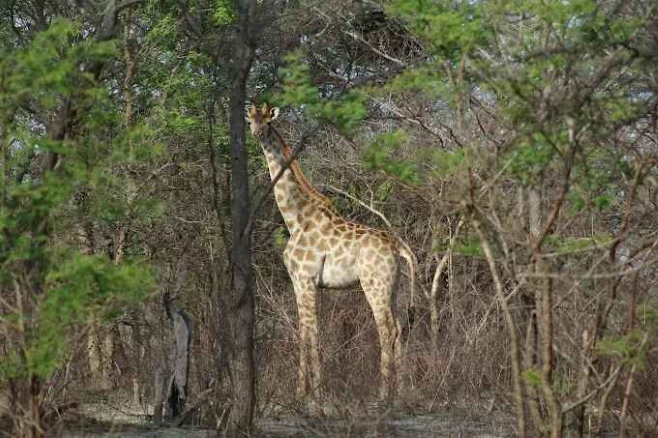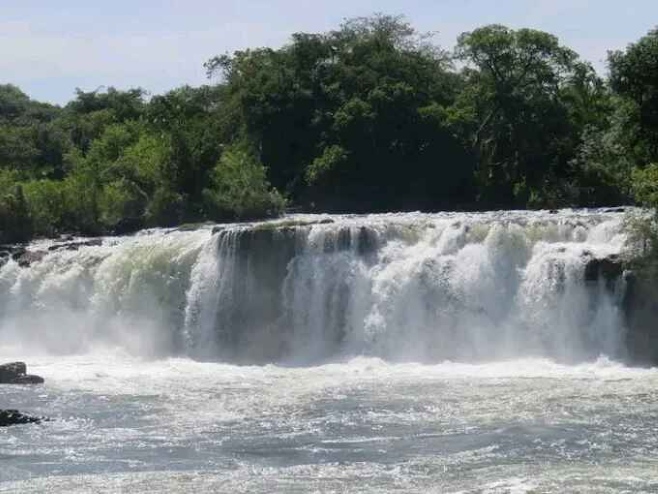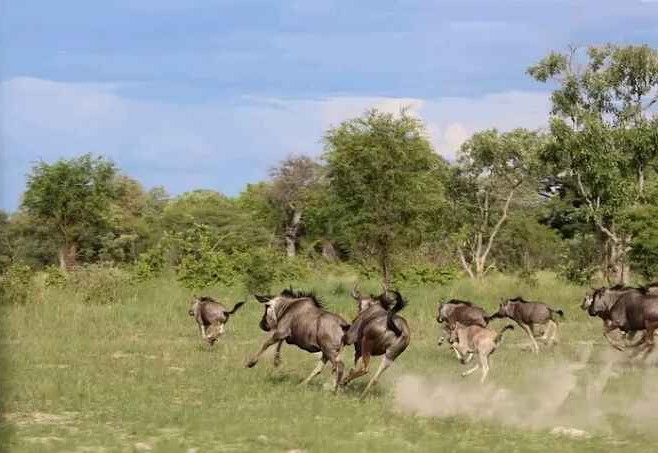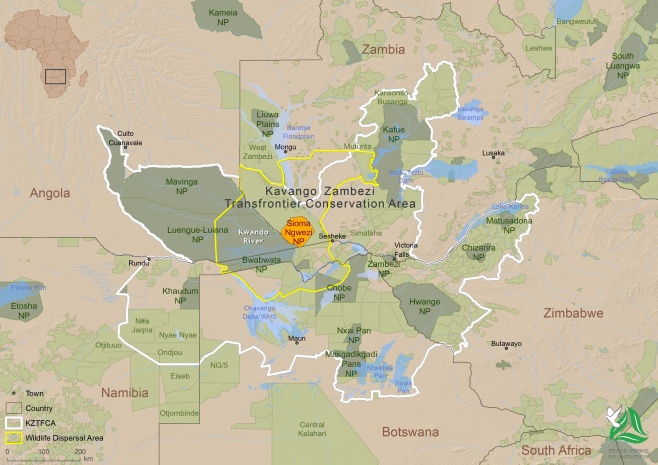Sioma Ngwezi National Park: Wildlife and travel guide in Zambia
In search of a virgin piece of African wilderness? Sioma Ngwezi National Park can provide exactly that. It is a remote park in the Western Province of Zambia that is off the beaten track, but that is all the better. It is a paradise of hard-core safari enthusiasts who seek pristine nature, spectacular wildlife experiences and reduced mass tourism.
- Where is Sioma Ngwezi National Park located?
- Best time to visit
- How to get there
- Park entry requirements
- What to expect: Wildlife and scenery
- Things to do in Sioma Ngwezi National Park
- Lodging and accommodation options
- Essential travel tips
- Local culture and community interaction
- Food and supplies
- Money and payment options
- Part of something bigger: KAZA transfrontier conservation area
- FAQs for Tourists
- Final thoughts: Is it worth the trip?
Where is Sioma Ngwezi National Park located?
The park borders Namibia and lies close to the Angolan frontier, forming part of the Kavango-Zambezi Transfrontier Conservation Area (KAZA). It is approximately 60-80km south of the town of Sesheke and forms part of the Kavango-Zambezi Transfrontier Conservation Area being the largest transboundary conservation area in Africa.
It means that your safari in this place could be easily combined with the trip to Caprivi Strip in Namibia or even Okavango Delta in Botswana.

Wild giraffes spotted on safari in Sioma Ngwezi
Best time to visit
Visiting during the dry season, which is between May and October, is best. The roads can be used and there is little vegetation with most wildlife grouping around water bodies which makes them very easy to sight. Avoid the rainy season (November to April) unless you are ready to face muddy roads and inaccessibility.
How to get there
By road
If you're coming from Zambia, the most common route is through Sesheke. From there, you’ll need a 4x4 vehicle to reach the park’s boundaries. This isn’t a place for your average sedan - expect sandy tracks and minimal signage.
From Namibia or Angola
Getting into Zambia at Katima Mulilo (Namibia) is very easy through the Katima-Sesheke bridge. While Sioma Ngwezi borders Angola, tourist access from Angola is currently uncommon and logistically challenging due to limited border infrastructure.
Park entry requirements
Entry fees and permits
Every tourist must contribute towards the park entrance fee which is normally paid at special ranger stations. The prices are different, depending on your nationality, type and length of stay of your vehicle. Other permits may be needed to take guided activities such as game drives or bush walks.
Visa requirements for Tourists
Most international visitors require a tourist visa for Zambia, but regulations change frequently. Always confirm the latest visa and park entry fee requirements with the official Zambia Immigration website or your local embassy before traveling. Visit the current information through Zambia Immigration or your local embassy.
What to expect: Wildlife and scenery
Animals you might see
Expect a wilder and less developed safari experience than in famous parks like Chobe or Serengeti. Wildlife densities are lower, but the solitude and pristine landscapes make the park unique. While it’s not as commercial as other parks, Sioma Ngwezi offers incredible wildlife. Elephants are frequent visitors, while antelope species such as sable, roan and eland are highlights. Predators like lions, leopards and cheetahs are present but sightings are rare due to low densities.
Birds and reptiles
Birders will be delighted - around 300 bird species have been recorded in the park, including hornbills, fish eagles and the elusive wattled crane. The waterways are home to Nile crocodiles, and visitors should also be aware of occasional snake sightings.
Things to do in Sioma Ngwezi National Park
Game drives and wildlife viewing
You’ll need your own 4x4 or to join a guided safari. Game drives here are thrilling and unpredictable. With few visitors, your vehicle might be the only one around - just you, the guide and the wild.
Nature walks and photography
One can organize guided walks to people wishing to establish closer ties with the landscape. Photographers in search of wilderness photos also dream of the park.
Birdwatching opportunities
Bring binoculars - this park is a birdwatchers heaven. The best sightings are in early mornings and evenings especially near rivers and floodplains.

Ngonye Falls near Sioma Ngwezi – ideal for a combined itinerary
Lodging and accommodation options
Bush camps and eco-lodges
Although accommodation within the park is minimal, other lodges such as the lodges in Sioma town or on the Zambezi River provide bush-like comfort. There are some tour companies which run seasonal tented camps in the park.
Camping for the adventurous
Looking to get the real wilderness? One can camp in special areas. Expect rustic conditions - bring your own equipment, food and water. Never pitch camp without permission of parks.
Essential travel tips
Safety and health precautions
- Bring malaria prophylaxis - this is a malaria-prone area.
- Pack a basic medical kit and plenty of water.
- Mobile signal is limited, so inform someone of your plans in advance.
- Always follow ranger instructions during activities.
What to pack
- Sturdy hiking boots
- Neutral-colored clothing for safaris
- Binoculars and camera with zoom lens
- Insect repellent and sunblock
- Personal ID, passport and a copy of your visa
Local culture and community interaction
Although Sioma Ngwezi is known to be a place with remarkable natural beauty, it is also found within the ancestral homeland of the Lozi and the Mbunda people. These are the communities with strong connection with the land; they tend to practice sustainability that favors conservation. Tourists can be presented with the opportunity to engage the local community by visiting community-based markets, cultural shows or guided tours of the village. Local customs and traditions should be respected. Think about buying some handmade items or make a donation to local tourism cooperatives - it will enhance your tourist experience and help neighboring communities to the park as well.
Food and supplies
There are no restaurants, shops, or ATMs inside the park — visitors must bring all food, fuel and supplies from nearby towns such as Sesheke or Mongu. It is best to carry adequate food, water and gasoline, and camping items in the nearby towns like Sesheke or Senanga. When in a lodge, it is advisable to ask beforehand whether the meals are included. To the campers or self drivers, carry non-perishable foods, a good cooking kit and additional water to drink. Remote setting implies that there will be no supermarkets or reserve supply points when one is inside the park.

Discover unique animals and birdlife in Sioma Ngwezi, Zambia
Money and payment options
All the entry fees and permits are charged in Zambian Kwacha (ZMW) and are usually received in cash at the site. At local accommodations or rural checkpoints, credit cards are hardly accepted. ATMs are not available in the park and you must have cash before entering the park, preferably in Livingstone, Mongu or Sesheke. Make sure you carry adequate funds to access the park, gas, food and emergency costs.
Part of something bigger: KAZA transfrontier conservation area
Sioma Ngwezi is not an ordinary national park. It forms part of KAZA - the revolutionary international conservation zone between Zambia, Namibia, Angola, Botswana and Zimbabwe. Wildlife can cross borders freely and tourism partnership projects are increasing. This is where you can begin your journey and proceed to Chobe in Botswana or Caprivi wetlands in Namibia.
FAQs for Tourists
- Can I visit Sioma Ngwezi without a guide?
Yes, but it’s strongly recommended to go with a licensed guide, especially if you're unfamiliar with remote terrain and wildlife behavior.
- Are there ATMs or shops inside the park?
No. Stock up on fuel, food and cash in Sesheke or Mongu before entering.
- Is Sioma Ngwezi suitable for families with kids?
It’s more suitable for experienced travelers. Families with older children and a love for nature may enjoy it, but it lacks the infrastructure found in more touristy parks.
- How many days should I spend in the park?
At least 2–3 days to explore the area, spot wildlife and unwind in nature without rushing.
- Can I combine my visit with other nearby attractions?
Definitely. Consider adding Ngonye Falls National Park, the Zambezi River or Namibia’s Bwabwata National Park to your itinerary.

Sioma Ngwezi National Park, Zambia map
Final thoughts: Is it worth the trip?
Definitely, unless you are the type of tourist who prefers resort comfort to natural beauty. Sioma Ngwezi is untamed, natural and not so well known. It is ideal for those who have been to safari before or those who seek an un-trodden experience. And combine this with a visit to nearby Ngonye Falls or a river safari along the Zambezi and you will have an unforgettable travel experience.
Related Articles
- Air Charter Zambia: Tourist guide to flights, safaris & transfers
- Ngonye Falls: Zambia’s natural beauty and cultural heritage
- Luambe National Park: Discover Zambia’s untouched wilderness
- Lavushi Manda National Park: Zambia’s hidden gem
- Sioma Ngwezi National Park: Wildlife and travel guide in Zambia
- Zambia eVisa (online visa) or visa on arrival: Key differences
- Barotse Floodplain: Importance of Zambia’s seasonal wetland
- Angel’s Pool Zambia: Experience Victoria Falls up close
- Nyege Nyege festival: East Africa’s music and arts celebration




